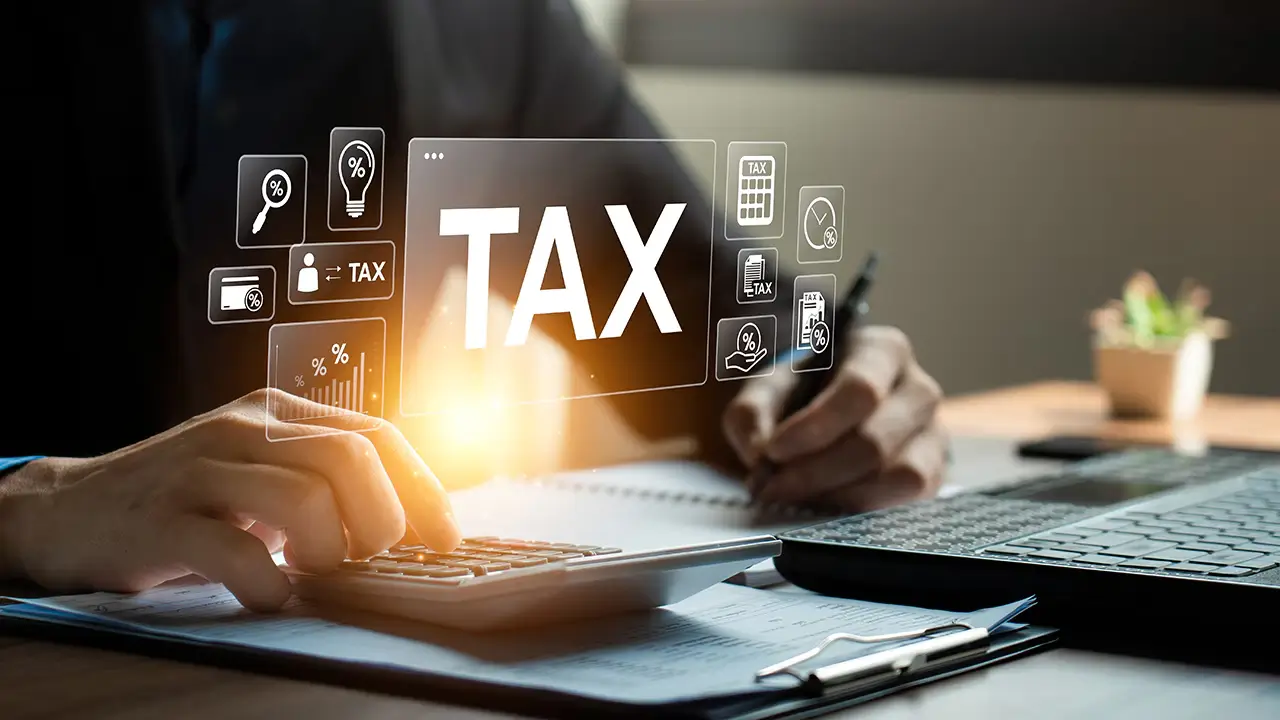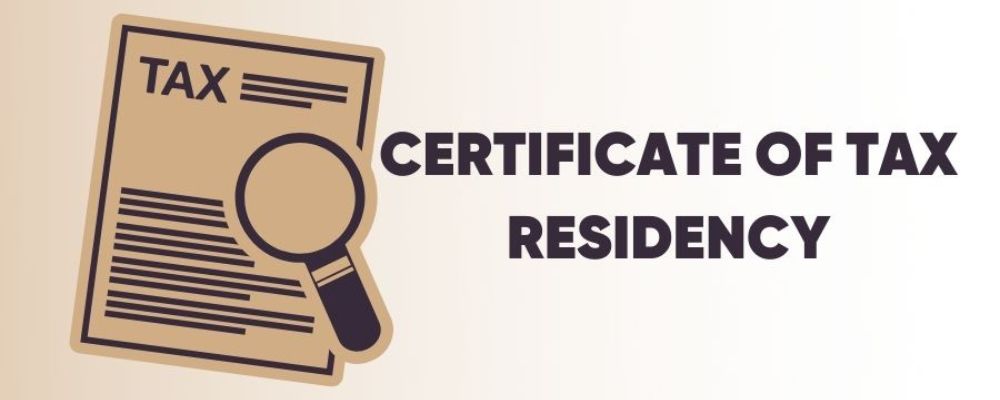
Introduction: Understanding VAT in the United Arab Emirates
Value Added Tax (VAT) has been an important part of the UAE’s economic landscape since its introduction in January 2018. Whether you’re a business owner, accountant, consumer, or simply someone living in the UAE, understanding how to calculate VAT in UAE is an essential skill that affects your everyday purchases and business operations.
In this comprehensive guide, we’ll walk you through everything you need to know about VAT calculations in the UAE, from basic formulas to practical examples using different methods. We’ve designed this resource to be accessible and easy to understand, even if you’re not a financial expert.
VAT in the UAE currently stands at 5%, which is relatively low compared to many other countries worldwide. However, calculating it correctly is crucial for tax compliance, accurate pricing, and proper financial management. Whether you’re trying to figure out how to calculate VAT from total amount or how to calculate VAT in Dubai for your business, this guide has you covered.
Let’s dive into the world of VAT calculations and make this seemingly complex topic simple and manageable.
What is VAT and Why It Matters in the UAE
Before we learn how to calculate VAT in UAE, it’s important to understand what VAT actually is and why it was implemented.
Definition of VAT
Value Added Tax (VAT) is a consumption tax placed on products and services at each stage where value is added, from production to the point of sale. Unlike income tax which is paid on earnings, VAT is paid by consumers when they purchase goods or services.
VAT Implementation in the UAE
The UAE introduced VAT on January 1, 2018, at a standard rate of 5%. The Federal Tax Authority (FTA) oversees VAT implementation and compliance across all seven emirates, including Dubai, Abu Dhabi, Sharjah, Ajman, Umm Al Quwain, Ras Al Khaimah, and Fujairah.
Why Understanding VAT Calculation is Important
Whether you’re a:
- Business owner who needs to apply VAT correctly
- Accountant responsible for tax compliance
- Consumer who wants to understand charges on purchases
- Investor considering the UAE market
Understanding how to calculate VAT in UAE is essential for proper financial planning, legal compliance, and making informed financial decisions.
Related Guide: How to Claim VAT Refund in UAE for Tourists
Basic VAT Concepts You Need to Know
Before we get into the calculations, let’s clarify some basic VAT concepts that will help you understand the process better.
Standard Rate vs. Zero-Rated and Exempt Items
While the standard VAT rate in the UAE is 5%, some goods and services are:
- Zero-rated: VAT is charged at 0% (businesses can still claim input tax)
- Exempt: No VAT is charged (businesses cannot claim input tax)
Examples of zero-rated items include:
- Certain healthcare services
- Educational services
- International transportation
- First supply of residential buildings
- Some investment gold, silver, and platinum
Examples of exempt items include:
- Some financial services
- Residential properties (excluding first supply)
- Local passenger transport
- Bare land
VAT-Inclusive vs. VAT-Exclusive Prices
When learning how to calculate VAT in UAE, it’s important to understand the difference between:
- VAT-inclusive price: The total price including VAT (what the customer pays)
- VAT-exclusive price: The price before VAT is added (the base price)
Understanding whether a price includes VAT or not is crucial for accurate calculations.
Input Tax vs. Output Tax
For businesses, these terms are important to understand:
- Input VAT: The VAT you pay on purchases for your business
- Output VAT: The VAT you collect from customers on your sales
The difference between these amounts determines whether you owe tax to the FTA or can claim a refund.
Related Article: VAT Amendments in the UAE 2025
The Basic Formula: How to Calculate VAT in UAE
Now let’s get to the heart of the matter: how to calculate VAT in UAE using the basic formula.
VAT-Exclusive to VAT-Inclusive Calculation
To add VAT to a price (calculating VAT-inclusive price from a VAT-exclusive price):
VAT Amount = Price × VAT Rate
VAT-Inclusive Price = Price + VAT AmountUsing the UAE’s 5% rate:
VAT Amount = Price × 0.05
VAT-Inclusive Price = Price + VAT AmountExample:
If an item costs AED 100 (VAT-exclusive):
- VAT Amount = 100 × 0.05 = AED 5
- VAT-Inclusive Price = 100 + 5 = AED 105
VAT-Inclusive to VAT-Exclusive Calculation
To extract VAT from a price (calculating VAT-exclusive price from a VAT-inclusive price):
VAT-Exclusive Price = VAT-Inclusive Price ÷ (1 + VAT Rate)
VAT Amount = VAT-Inclusive Price - VAT-Exclusive PriceUsing the UAE’s 5% rate:
VAT-Exclusive Price = VAT-Inclusive Price ÷ 1.05
VAT Amount = VAT-Inclusive Price - VAT-Exclusive PriceExample:
If an item costs AED 105 (VAT-inclusive):
- VAT-Exclusive Price = 105 ÷ 1.05 = AED 100
- VAT Amount = 105 – 100 = AED 5
This approach is essential when you need to know how to calculate VAT from total amount that already includes VAT.
How to Calculate VAT in Calculator: Step-by-Step Guide
Many people want to know how to calculate VAT in calculator since it’s the most accessible tool for quick calculations. Here’s how to use a standard calculator to compute VAT:
Adding VAT to a Price
- Enter the VAT-exclusive price
- Multiply by 0.05 (press “×” followed by “0.05” or “5” and “%”)
- This gives you the VAT amount
- Add this to the original price (press “+” followed by your original price)
- The result is your VAT-inclusive price
Relevant Guide: How to Register VAT for New Company: Expert Guide
Extracting VAT from a Price
- Enter the VAT-inclusive price
- Divide by 1.05 (press “÷” followed by “1.05”)
- This gives you the VAT-exclusive price
- To find the VAT amount, subtract the VAT-exclusive price from the VAT-inclusive price
Using Specialized VAT Calculators
There are also dedicated VAT calculators online and in app stores that can make the process even simpler. These typically have fields for:
- Enter price
- Specify if the price includes VAT
- Select VAT rate (usually preset to 5% for UAE)
These calculators instantly show the VAT amount, the price excluding VAT, and the price including VAT.
How to Calculate VAT Inclusive Amount in Different Scenarios
Understanding how to calculate VAT inclusive amount is critical for proper pricing and invoicing. Let’s explore various scenarios:
For Retail Products
Retailers need to ensure their shelf prices include VAT. Here’s how to calculate the VAT-inclusive price for products:
- Determine the cost price and desired profit margin
- Calculate your selling price before VAT
- Apply the VAT formula: Selling Price × 0.05 = VAT Amount
- Add the VAT amount to your selling price to get the final retail price
Example:
- Cost price of a smartphone: AED 950
- Desired markup: 20% (AED 190)
- Selling price before VAT: AED 1,140
- VAT amount: 1,140 × 0.05 = AED 57
- Final retail price (VAT-inclusive): AED 1,197
For Services
Service providers often quote prices exclusive of VAT and then add it to invoices:
- Determine your service rate
- Calculate the VAT: Service Rate × 0.05
- Add VAT to get the total amount payable
Example:
- Consulting fee: AED 2,000 per day
- VAT amount: 2,000 × 0.05 = AED 100
- Total invoice amount: AED 2,100
For Imported Goods
Calculating VAT for imported goods involves considering customs duties:
- Determine the CIF value (Cost, Insurance, and Freight)
- Add applicable customs duties
- Calculate VAT on this total value
Example:
- CIF value of imported furniture: AED 10,000
- Customs duty (5%): AED 500
- Value for VAT calculation: AED 10,500
- VAT amount: 10,500 × 0.05 = AED 525
- Total import cost: AED 11,025
Understanding how to calculate VAT in UAE for imported goods is particularly important for businesses bringing merchandise into the country.
Common Mistakes When Calculating VAT in the UAE
Even when you think you know how to calculate VAT in UAE, it’s easy to make mistakes. Here are some common errors and how to avoid them:
Applying VAT to Exempt or Zero-Rated Items
Not all goods and services in the UAE attract the standard 5% VAT rate. Applying VAT incorrectly to exempt or zero-rated items is a common mistake.
Solution: Keep an updated list of zero-rated and exempt items relevant to your business. When in doubt, consult the FTA guidelines or a tax professional.
Incorrect Rounding
VAT calculations often result in figures with more than two decimal places, leading to rounding errors.
Solution: Follow the FTA’s rounding rules – round to the nearest fils (two decimal places) only at the final amount, not during intermediate calculations.
Miscalculating VAT on Discounted Items
When items are discounted, VAT should be calculated on the discounted price, not the original price.
Solution: Always apply discounts first, then calculate VAT on the reduced amount.
Example:
- Original price: AED 200
- Discount: 20% (AED 40)
- Discounted price: AED 160
- VAT amount: 160 × 0.05 = AED 8
- Final price: AED 168
Inconsistent Treatment of VAT in Accounting Records
Mixing VAT-inclusive and VAT-exclusive figures in accounting records leads to errors in tax returns.
Solution: Adopt a consistent approach in your accounting system – either record all transactions exclusive of VAT and track VAT separately, or clearly mark which figures include VAT.
How to Calculate VAT in Dubai and Other Emirates
When learning how to calculate VAT in Dubai or any other emirate in the UAE, it’s important to understand that the VAT system is federal – meaning the same rules and rates apply across all seven emirates.
Is VAT Calculation Different Across Emirates?
No, the method for how to calculate VAT in Dubai is identical to calculating VAT in Abu Dhabi, Sharjah, or any other emirate. The standard 5% rate applies uniformly throughout the UAE.
Special Economic Zones and Free Zones
While the calculation method remains the same, certain transactions in Designated Zones (special economic and free zones) may have different VAT treatments:
- Goods traded within Designated Zones may be outside the scope of VAT
- Services provided in Designated Zones follow standard VAT rules
- Goods moved from Designated Zones to mainland UAE are treated as imports
Example of Calculating VAT in a Free Zone Context:
- A company in Jebel Ali Free Zone sells goods worth AED 50,000 to another company in the same free zone: No VAT applicable
- The same company provides consultancy services worth AED 20,000: Standard 5% VAT applies (AED 1,000)
- The company moves goods worth AED 30,000 to its branch in mainland Dubai: Import VAT of 5% applies (AED 1,500)
Understanding these nuances is crucial when figuring out how to calculate VAT in Dubai free zones versus mainland operations.
Practical Examples: How to Calculate VAT from Total Amount
Let’s work through some practical examples of how to calculate VAT from total amount in different real-world scenarios:
Example 1: Retail Purchase
You buy a laptop with a price tag of AED 3,150 (VAT-inclusive). How much is the actual VAT paid?
Step 1: Calculate the VAT-exclusive price VAT-exclusive price = 3,150 ÷ 1.05 = AED 3,000
Step 2: Calculate the VAT amount VAT amount = 3,150 – 3,000 = AED 150
So on your AED 3,150 purchase, you paid AED 150 in VAT.
Example 2: Restaurant Bill
Your restaurant bill shows a total of AED 420, including VAT. What’s the VAT amount?
Step 1: Calculate the VAT-exclusive price VAT-exclusive price = 420 ÷ 1.05 = AED 400
Step 2: Calculate the VAT amount VAT amount = 420 – 400 = AED 20
So the restaurant collected AED 20 in VAT from your meal.
Example 3: Business Invoice
You receive an invoice for office supplies totaling AED 5,250 including VAT. You need to record the VAT amount for your input tax claim.
Step 1: Calculate the VAT-exclusive price VAT-exclusive price = 5,250 ÷ 1.05 = AED 5,000
Step 2: Calculate the VAT amount VAT amount = 5,250 – 5,000 = AED 250
You can claim AED 250 as input tax.
Example 4: Multiple Items with Different VAT Treatments
Your supermarket bill includes:
- Standard-rated groceries: AED 315 (VAT-inclusive)
- Zero-rated vegetables: AED 50
- Exempt bread: AED 10
How much VAT did you pay?
Step 1: Calculate VAT only on standard-rated items VAT-exclusive price of groceries = 315 ÷ 1.05 = AED 300 VAT amount = 315 – 300 = AED 15
Step 2: No VAT on zero-rated or exempt items Total VAT paid = AED 15
These examples illustrate the practical application of how to calculate VAT from total amount in everyday scenarios.
Digital Tools and Apps for VAT Calculation in the UAE
In today’s digital age, numerous tools can help you master how to calculate VAT in UAE more efficiently:
FTA’s Official VAT Calculator
The Federal Tax Authority offers an official VAT calculator on their website and mobile app that allows you to:
- Calculate VAT on single transactions
- Determine VAT-exclusive and VAT-inclusive prices
- Ensure calculations comply with official guidelines
Accounting Software with UAE VAT Features
Popular accounting platforms have been adapted for the UAE market with built-in VAT calculation features:
- QuickBooks UAE
- Zoho Books UAE
- Xero with UAE tax settings
- Sage Business Cloud Accounting
These software solutions automatically:
- Calculate VAT on invoices and purchases
- Track input and output VAT
- Generate VAT return reports
Mobile Apps for On-the-Go Calculations
Several mobile apps can help with quick VAT calculations:
- VAT Calculator UAE
- UAE Tax Calculator
- Dubai VAT Calculator
These apps are particularly useful for:
- Small business owners
- Freelancers
- Consumers wanting to check their purchases
Excel Templates for VAT Calculations
For those comfortable with spreadsheets, Excel templates can provide a customizable solution for:
- Batch VAT calculations
- Creating VAT-compliant invoices
- Tracking VAT for tax returns
Using these digital tools can make understanding how to calculate VAT in calculator or other digital platforms much simpler and reduce the likelihood of errors.
VAT Record-Keeping and Reporting Requirements
Knowing how to calculate VAT in UAE is only part of the compliance picture. Proper record-keeping and reporting are equally important:
Essential VAT Records to Maintain
Businesses must keep detailed records of:
- All sales invoices (showing VAT charged)
- All purchase invoices (showing VAT paid)
- Import and export documentation
- Credit and debit notes
- VAT account showing calculations
- General ledger entries related to VAT
VAT Return Filing Requirements
VAT-registered businesses must:
- File VAT returns quarterly or monthly (depending on turnover)
- Calculate total output VAT collected
- Calculate total input VAT paid
- Determine the net VAT payable or refundable
- Pay any VAT due within the deadline
VAT Invoice Requirements
Valid VAT invoices must include:
- The words “Tax Invoice”
- Supplier’s name, address, and TRN
- Customer’s name, address, and TRN (if registered)
- Invoice date and number
- Description of goods or services
- For each line item: quantity, unit price, discount, and VAT rate
- Total amount excluding VAT
- Total VAT amount
- Total amount including VAT
Proper documentation is crucial when you’re figuring out how to calculate VAT in UAE for business purposes.
Advanced VAT Calculation Scenarios
Beyond basic calculations, there are several advanced scenarios where understanding how to calculate VAT in UAE becomes more complex:
Partial Exemption
Businesses that make both taxable and exempt supplies need to calculate how much input tax they can recover:
- Direct attribution: Input tax directly related to taxable supplies is fully recoverable
- Direct attribution: Input tax directly related to exempt supplies is not recoverable
- Residual input tax: Overhead costs that relate to both taxable and exempt supplies require apportionment
Example:
A real estate company that sells both commercial properties (standard-rated) and residential properties (exempt) must apportion its general overhead VAT based on the ratio of taxable to total supplies.
VAT on Profit Margin Scheme
For second-hand goods, antiques, and collectors’ items, VAT can be calculated on the profit margin rather than the full selling price:
VAT = (Selling Price - Purchase Price) × (5 ÷ 105)Example:
A used car dealer buys a car for AED 50,000 and sells it for AED 60,000:
- Profit margin: AED 10,000
- VAT on margin: 10,000 × (5 ÷ 105) = AED 476.19
Bad Debt Relief
When customers don’t pay, businesses can reclaim the output VAT previously paid to the FTA:
- Original invoice: Calculate and pay output VAT normally
- Bad debt: After at least 6 months, reclaim the VAT portion of the unpaid amount
Example:
An unpaid invoice of AED 10,500 (including VAT):
- VAT component: 10,500 – (10,500 ÷ 1.05) = AED 500
- After 6 months, the business can reclaim this AED 500
Reverse Charge Mechanism
For certain imported services or goods where the place of supply is the UAE:
- The recipient accounts for VAT (instead of the supplier)
- The recipient both pays and reclaims the VAT in the same return (if fully taxable)
Example:
A UAE company receives consultancy services worth AED 20,000 from an overseas provider:
- The UAE company must account for VAT: 20,000 × 0.05 = AED 1,000
- This appears as both output and input tax on their return (potentially resulting in no net payment)
Understanding these advanced scenarios is important for businesses dealing with complex transactions.
VAT and Tourism: Tax Refund Scheme
The UAE has implemented a Tourist Refund Scheme allowing visitors to claim back VAT on purchases:
How Tourists Can Calculate Refundable VAT
Tourists should understand how to calculate VAT from total amount to know what refund to expect:
- For a VAT-inclusive purchase, calculate: Purchase Price – (Purchase Price ÷ 1.05)
- Note that a processing fee is deducted from the refundable amount
Example:
A tourist buys a watch for AED 5,250 (including VAT):
- VAT amount = 5,250 – (5,250 ÷ 1.05) = AED 250
- Refundable amount before processing fee = AED 250
Eligibility Requirements for Tourist VAT Refunds
To be eligible for refunds, purchases must:
- Be from retailers participating in the scheme
- Exceed the minimum spend threshold (currently AED 250 per retailer)
- Be taken out of the UAE within 90 days
- Not be excluded items (like food and cars)
How Retailers Calculate and Process Tourist VAT Refunds
Retailers need to:
- Verify eligibility of customers (check passport/visa)
- Issue tax invoices with required details
- Calculate the correct VAT amount
- Explain the refund process to tourists
Understanding the tourist refund scheme is valuable for both visitors to the UAE and retailers serving them.
VAT Calculation Changes and Updates to Watch For
The VAT landscape in the UAE continues to evolve. Here are potential changes that might affect how to calculate VAT in UAE in the near future:
Potential Rate Changes
While the UAE’s 5% rate is currently among the lowest globally, economic conditions might lead to adjustments:
- Global trends suggest possible incremental increases
- Differential rates for luxury goods or specific sectors might be introduced
Digital Services and E-commerce
With the growth of digital economy:
- Rules for calculating VAT on digital services might be refined
- E-commerce platforms may face increased VAT compliance requirements
- Cross-border digital transactions could see new calculation methods
Harmonization with Other GCC States
As other Gulf Cooperation Council states implement and adjust their VAT systems:
- Calculation methods might be standardized across the region
- Cross-border transaction rules could be harmonized
- Reporting requirements might align regionally
Sustainability and Green Tax Initiatives
As global focus shifts to sustainability:
- Environmental taxes might complement the VAT system
- Lower VAT rates for eco-friendly products could emerge
- Carbon-intensive goods might face additional taxation
Staying updated on these potential changes will help businesses and individuals adapt their understanding of how to calculate VAT in UAE as the system evolves.
Frequently Asked Questions: How to Calculate VAT in UAE
Here are answers to some commonly asked questions about VAT calculations in the UAE:
What is the current VAT rate in the UAE?
The standard VAT rate in the UAE is 5%. This applies to most goods and services, with exceptions for zero-rated and exempt items.
Can I calculate VAT on a calculator?
Yes, you can use a standard calculator to figure out how to calculate VAT in calculator by either multiplying the net amount by 0.05 to find the VAT amount or dividing the gross amount by 1.05 to extract the net amount.
How do I know if a price includes VAT?
Businesses are required to clearly state whether displayed prices include VAT or not. Additionally, tax invoices must separately show the VAT amount. If in doubt, you can ask the merchant or calculate backward (divide by 1.05) to check.
Is VAT calculated differently for mainland businesses versus free zone businesses?
The calculation method for how to calculate VAT in Dubai or any emirate remains the same (5% standard rate). However, transactions within Designated Zones may have special treatments. Services typically attract VAT even in free zones, while goods traded within the same Designated Zone may be outside the scope of VAT.
How do I calculate VAT for mixed supplies (partially exempt)?
For mixed supplies, you need to determine whether they constitute a single composite supply or multiple separate supplies. If they’re separate supplies, calculate VAT individually for each component based on its VAT status. For composite supplies, the VAT treatment usually follows the principal element.
Can I recover all the VAT I pay on business purchases?
You can generally recover input VAT related to making taxable supplies (standard-rated or zero-rated). VAT related to exempt supplies or personal use cannot be recovered. For mixed use, apportionment is required.
How do I calculate VAT on second-hand goods?
For second-hand goods under the profit margin scheme, VAT is calculated on the profit margin rather than the full selling price, using the formula: Margin × (5 ÷ 105).
Conclusion: Mastering VAT Calculations in the UAE
Understanding how to calculate VAT in UAE is an essential skill for businesses, accountants, and consumers alike. Throughout this comprehensive guide, we’ve covered everything from basic formulas to advanced scenarios, providing practical examples and tools to help you navigate the UAE’s VAT system with confidence.
Key takeaways from this guide include:
- The standard VAT rate in the UAE is 5%, applied to most goods and services with exceptions for zero-rated and exempt items.
- Basic VAT calculations involve either adding 5% to a net amount or extracting VAT from a gross amount by dividing by 1.05.
- Digital tools, including the FTA’s official calculator, accounting software, and mobile apps, can simplify how to calculate VAT in calculator or other digital platforms.
- Proper record-keeping and compliant invoicing are crucial elements of the VAT system, supporting accurate calculations and reporting.
- Advanced scenarios like partial exemption, margin scheme, bad debt relief, and the reverse charge mechanism require specialized calculation approaches.
- The Tourist Refund Scheme allows visitors to reclaim VAT on eligible purchases when leaving the UAE.
- Staying informed about potential future changes to the VAT system will help you adapt your calculation methods accordingly.
By mastering how to calculate VAT in UAE, you can ensure compliance with tax regulations, accurately manage your finances, and make informed business decisions. Whether you’re adding VAT to your prices, extracting VAT from inclusive amounts, or preparing VAT returns, the principles and methods outlined in this guide will serve as a valuable reference.
Remember that while this guide provides comprehensive information, tax regulations can change. For the most current guidance, always refer to the Federal Tax Authority’s official publications or consult with a qualified tax professional.
About the Author: This guide was prepared by a team of tax experts with extensive experience in UAE VAT implementation and compliance. The information is current as of April 2025 but should not be considered as legal or financial advice.
Additional Resources
For further information on how to calculate VAT in UAE and related topics, consider consulting these resources:
- Federal Tax Authority (FTA) official website
- VAT implementation guides published by the Ministry of Finance
- Professional tax advisories specializing in UAE taxation
- Industry-specific VAT guides for sectors with special provisions
- Online VAT calculators and digital tools designed for the UAE market
With the knowledge and tools provided in this guide, you’re well-equipped to handle VAT calculations with confidence in the United Arab Emirates.






